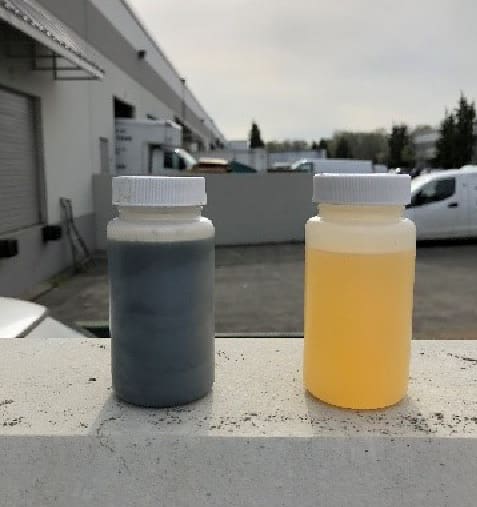
As a lawn care operator, efficiency is key, especially as you add more customers and need to cover more properties in one day. One method for efficiency is to take advantage of tank mixing multiple products to treat several lawn issues in one visit.
“Tank mixing is needed for lawn care operators because oftentimes they’re dealing with different things on the lawn,” says Ben Hamza, Ph.D., product development associate director with FMC Professional Solutions. “They can be dealing with times where they need to fertilize. They need to put down weed control. They need to put down the pre-emergent. With those three activities, there’s no product that can do all three, so what they can do is combine all those three inputs into a tank in the liquid form and spray all three. It is the most efficient way to deliver all three on lawns that need them.”
Best Practices
While LCOs should take advantage of tank mixing to be more efficient when treating properties, it is also important to not add unnecessary products to a yard.
“When you’re tank mixing and applying weed control on an area that doesn’t have weeds, while this is not going to harm the grass, but you’re really putting down something that’s not necessary,” Hamza says. “It’s waste environmentally. It’s not a sound practice. Also, it has an economic impact. You’re applying something that’s costing you money as an operator, but your customer is not benefiting any from it.”
Because no lawn is the same, Hamza advises having different tank mixes formulated for newer clients that might need more weed control than more established customers with healthy lawns.
“You want to make sure you’re tank mixing products for the right grass type for the right time of year and for the right target,” Hamza says.
Hamza says it’s all about knowing your clients and what the lawn needs at the time. As the seasons change you want to change your mixture to meet the lawn needs and environmental conditions.
For example, if you mix an insecticide along with a fertilizer and weed control, but there are no insects that need to be controlled, it is environmentally and economically unsound as you are applying something that is not needed.
While the products are designed to be compatible so you can mix them, you should double-check the first time when creating a new tank mix.
“Generally speaking, they’re formulated in such a way that they are compatible, or can be compatible,” Hamza says. “However, never assume they’re compatible. It’s always good to do what’s known as a jar test.”

In a jar test, you combine the right proportions of the products in a glass jar and shake it to see what it looks like. In the jar, see if the materials clump or settle to the bottom. If the mixture is clear and looks uniform, then the formulations are compatible.
You can also take the contents of the jar and spray them somewhere inconspicuous to see what it does, to confirm its compatitiblity.
“Over time, with experience, you will know certain formulations mix well, certain formulations don’t mix well,” Hamza says.
It is best to conduct the jar test in advance of treating a property. If the products you’re using are new, it’s always good to do a jar test.
“However, if you’ve used those combinations in the past, and they were safe and you got good results, there’s no need to redo the jar test year after year,” Hamza says. “It’s only when you’re introducing something new that you need to evaluate that in advance.”
Also sometimes it can be as straightforward as reading the label to know what mixtures won’t work.
“There’s a section in the label about mixing products together,” Hamza says. “Some labels will tell you do no mix this with that formula. So, if the label tells you do not mix these products, do not mix them. You don’t need to do a jar test to find out.”A critical practice for proper tank mixing is following the WALES method. The WALES method is as follows:
- W: Wettable powders, water dispersible granules
- A: Agitate until uniformly dispersed
- L: Liquid flowables (ex. SC formulations)
- E: Emulsifiable concentrates
- S: Soluble liquid products
“If you have multiple active ingredients, and you’re tank mixing and you want to follow the WALES method because if you put an E in before A, there’s a chance that that it would settle,” Hamza says.
Common Mistakes
Some of the most common mistakes when it comes to tank mixing are not following the previously mentioned WALES method and not noting the active ingredients’ formulation.
Hamza says differing formulations of the same active ingredient can cause it to react differently. He advises running a jar test if the active ingredient is the same but has different formulations.
Another mistake that can occur is mixing up the unit of measure for the mixture as some labels might say ounces per acre while others say active ingredient per acre. Reading milliliters and using ounces can also be a problem.

“You want to make sure you pay close attention to the unit of measure to be able to fill following the unit of measure that is on the label in order to be compliant,” Hamza says. “You want to apply the product at the right rate.”
Another important factor LCOs need to keep in mind of the quality of the water they are using for the tank mixing. If the water is too alkaline or too acidic it will impact the tank mix. Water with a lot of sediments and other soluble salts in it can impact the quality of the mix.
Hamza advises taking a water sample to the county extension office to run a water analysis and seek their advice for its suitability for use in tank mixing.
Created in partnership with the experts at FMC True Champions

